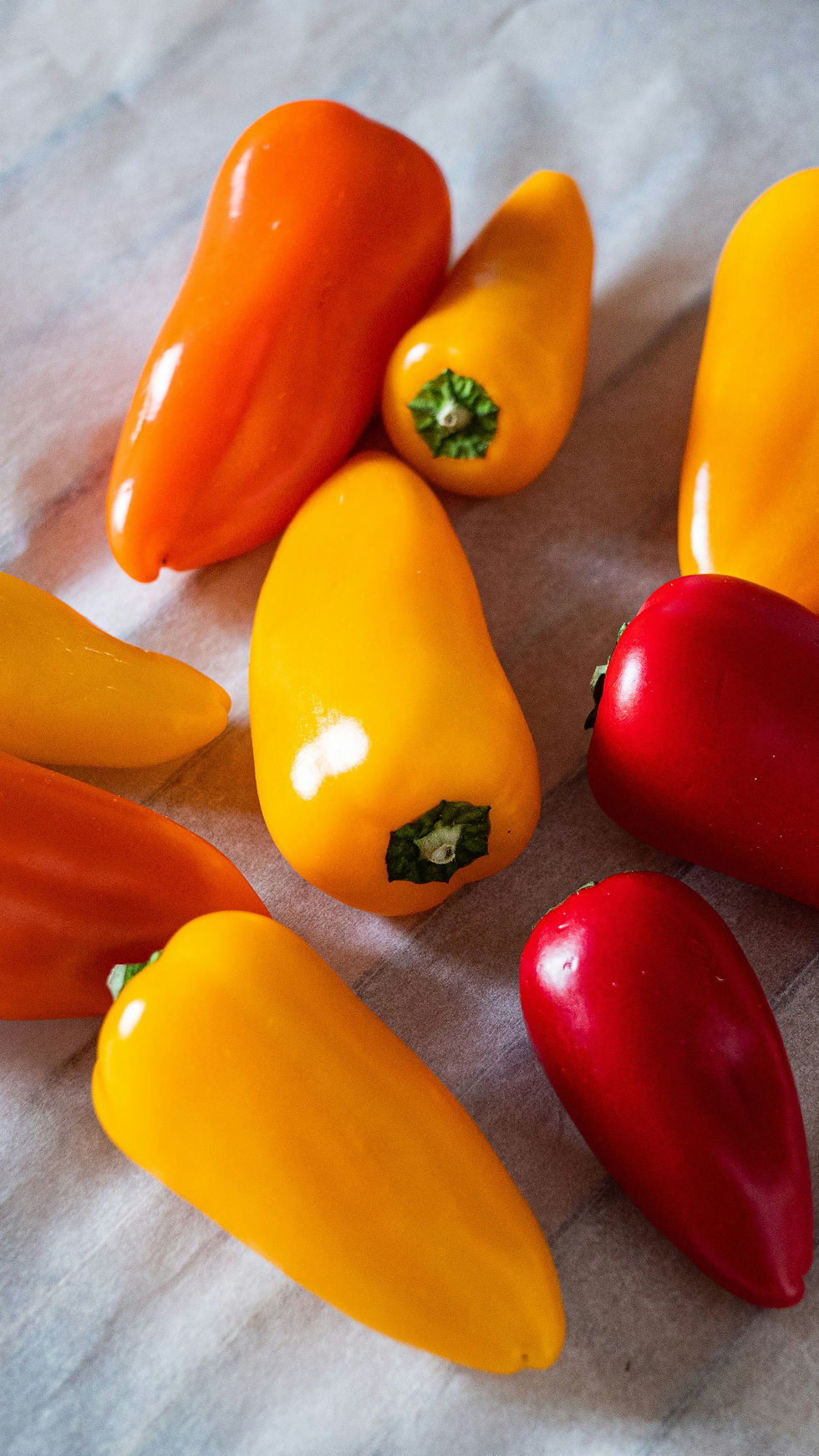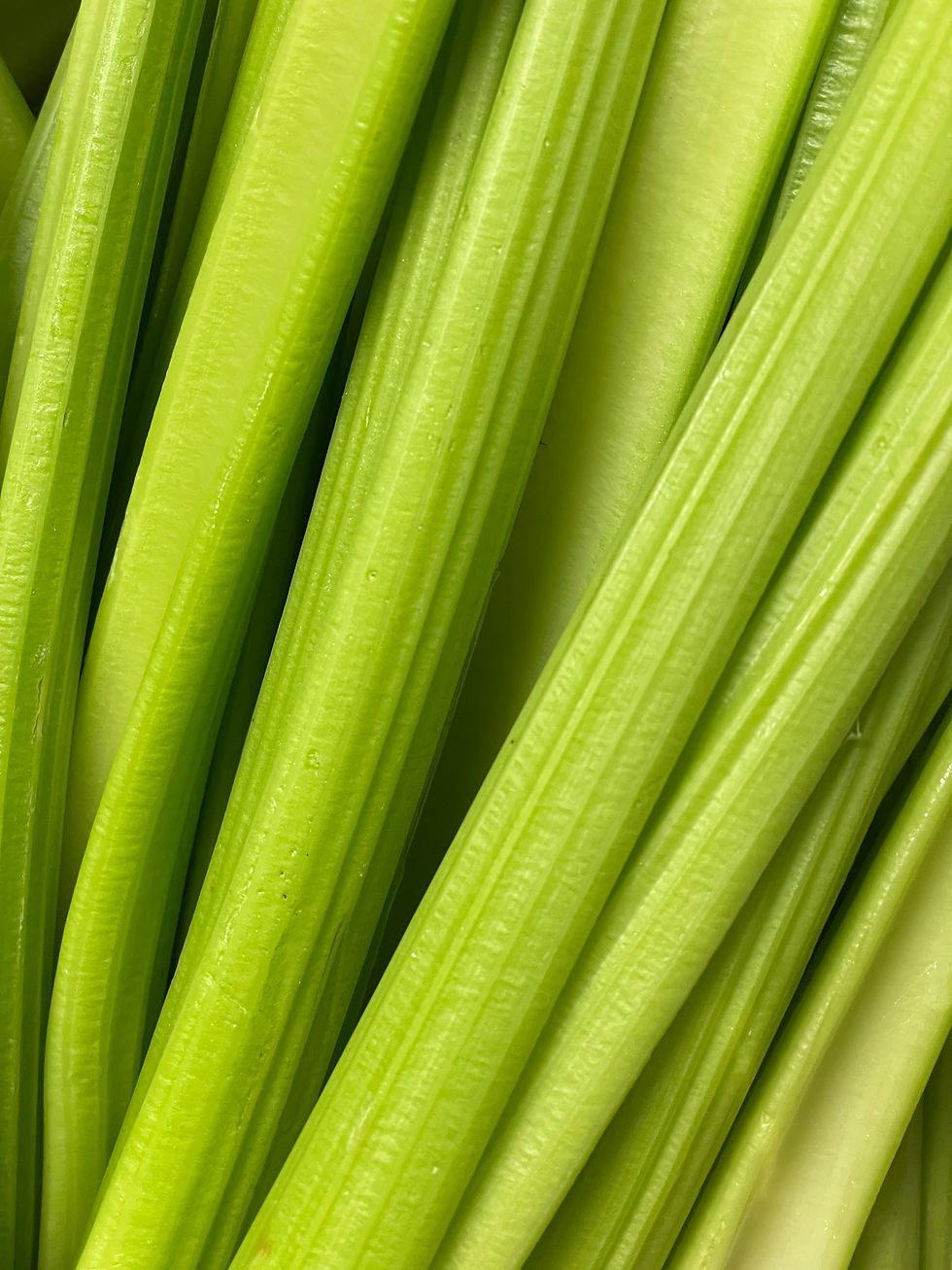Pickled!
- Natalie Findlay

- Sep 9
- 4 min read

The earliest pickles were made by fermentation. Where naturally occurring bacteria on vegetables such as cucumbers, cabbages, and onions, under the right circumstances, convert sugars into acetic acid and makes them last a long time. Fermentation plays the long game.
The short cut - vinegar pickling. Vinegar pickling works because microbes don’t like acid. Without the microbes; the pickled vegetables or fruits will also last a lot longer.
The most revered pickling vegetable is the cucumber. But there are many options to choose: carrots, green beans, beets, ginger, cauliflower, radish, onion, asparagus, celery, fennel, peppers… but this is not an exhaustive list. The best results come from vegetables that will not get too soggy. You want them to stay firm and crunchy when pickled.
If you’re thinking that only vegetables are allowed to be pickled… nope. Pickled fruits make delicious accompaniments to all kinds of dishes.
The basic structure of the quick pickle is vegetable (or fruit) + vinegar + salt + sugar.
There are many options of vinegars on the market. Try different combinations to achieve unique flavour combinations with different ingredients. The pickled red onions use a rosé wine vinegar in its recipe. It is more delicate, not as pungent and is delicious with the sweeter red onion - plus the colour is beautiful.
Quick pickling is a great way to use up both fresh or “on their way out” veggies or fruit. Pickling will elongate their shelf life plus add a zing to your meals.
The process is the same for all quick pickle recipes below:
1. Fill your jar with hot water to warm. Drain jar.
2. Add ingredients to jar.
3. In a medium stainless-steel pot, combine the liquids, sugar and salt.
4. Bring to a boil over medium-high heat, making sure the salt and sugar have dissolved. Immediately remove from stove and let cool a couple of minutes.
5. Pour the vinegar mixture into the jar, leaving 2 cm of headspace.
5. Wipe the rims clean and let cool. Seal tightly with the lids and refrigerate.
Japanese-style Pickled Cucumbers

Makes 1 regular pint jar
1¼ cup cucumber, thinly sliced
2 tsp sesame seeds
1 clove garlic, thinly sliced
1 Tbs ginger, thinly sliced
1¼ cup (300mL) rice vinegar
¼ cup (60 mL) water
2 Tbs (30 mL) soy sauce
1 Tbs (15 mL) mirin
Follow process from above.
Fill your jar with veggies layering in sesame seeds garlic and ginger.
Pairs well with: soba noodles, chicken, fish, rice.
Rosé Pickled Red Onion

Makes 1 regular pint jar
1 small bulb fennel, thinly sliced and fronds
¼ tsp pink peppercorn
¼ tsp mustard seed
6 sprigs thyme
1 orange, juice and zest
½ cup (120 mL) white wine vinegar
¼ cup (60 mL) water
2 tsp kosher salt
2 tsp sugar
Follow the process from above.
Fill your jar with the fennel slices layering in the fronds, peppercorn, mustard seeds, thyme and orange zest.
Great paired with grilled meats such as pork, fish and chicken. Also makes a quick appetizer of crostini, goat cheese, pickled fennel with the orange zest and walnuts.
Pickled Thai Style Veggie Medley

Makes regular pint jar
1½ medium carrots
1/3 cucumber
4 cm daikon radish
¼ bell pepper
3 Thai red chili
4 sprigs Thai basil
1½ cups (360 mL) rice wine vinegar
½ cup (120 mL) water
2 tsp kosher salt
1 Tbs sugar
Follow the process from above.
It is nice to have a variety of cuts (but not necessary). Slice the carrots into thin rounds. The cucumber into triangles. The daikon into matchsticks and the bell pepper into chunks.
The chili pepper will add a light flavour if left intact. For more heat slice one or more of them open.
Add all vegetables along with the chili pepper and basil to the jar.
Pairs well with: pad thai, curries, eggs, chicken, fish.
Pickled Pineapple and Jalapeño

Makes 1 half pint jar
¾ cup pineapple
½ jalapeño
¼ white onion
¼ tsp coriander seed
1/8 tsp cumin seed
¼ cup (60 mL) white wine vinegar
¼ cup (60 mL) water
1 Tbs sugar
1 tsp kosher salt
Follow the process from above.
You can use canned pineapple for this, or chop fresh pineapple into small cubes.
Thinly slice a fresh jalapeño (remove seeds for less heat if desired) and white onion.
Add pineapple, jalapeño and onion to your jar.
Pairs well with: beans, chicken, fish, tacos. Can also top a bowl of vanilla ice cream with it and a drizzle of olive oil.
Saffron Pickled Cauliflower

Makes 1 large mason jar
3 cups cauliflower
½ tsp peppercorns
¼ tsp coriander
3 cloves
8 sprigs thyme
1½ cups (360 mL) white wine vinegar
¾ cup (180 mL) water
1 tsp (5 mL) honey
1 tsp kosher salt
Follow the process from above.
Make sure you cut your cauliflower into florets. It’s easier to pack in the jar and serve.
Pairs well with: Indian food and brightens roasted vegetable bowls or cheese and charcuterie plates.
Pickled Sweet Peppers

Makes 1 regular pint jar
1/3 cup red pepper
1/3 cup orange pepper
1/3 cup yellow pepper
1 clove garlic
¼ tsp mustard seed
¾ cup (180 mL) apple cider vinegar
½ cup (120 mL) water
1 Tbs sugar
2 tsp kosher salt
Follow the process from above.
Roughly chop peppers and add to jar.
Pairs well with: peppers for fajitas and complements your veggie bowl.
Pickled Celery

Makes 1 regular pint jar
3 stalks celery
¼ tsp peppercorn
¼ tsp mustard seed
3 small stems dill
¾ cup (180 mL) white vinegar
¾ cup (180 mL) water
2 tsp kosher salt
1 Tbs sugar
Follow the process from above.
Thinly slice the celery and pack into jar.
Pairs well with: anything. They add the pickled taste as well as some crunch.







The Pickled Pineapple and Jalapeño recipe is particularly intriguing; I'd never thought of using it on vanilla ice cream! And the idea of using rosé wine vinegar on the red onions is a great way to add complex flavor and beautiful color. Sprunki
With its clever mix of strategy, risk, and social interaction, Steal a Brainrot invites players into a world where cunning and timing are just as important as speed and reflexes.